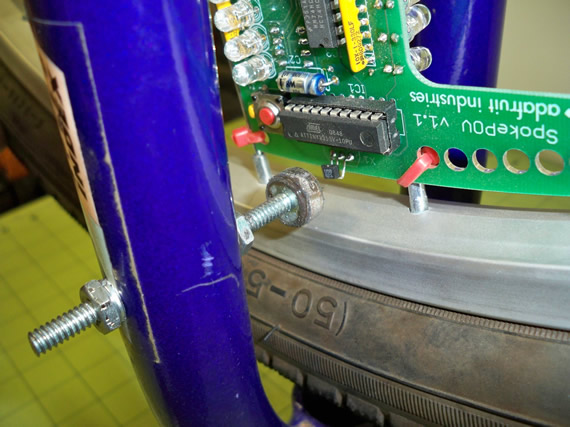This is a testing rig I constructed for my persistence of vision SpokePOV kit. I used an old bicycle, ceiling fan motor and wiring from an old lamp. It works great as a bench testing rig when programming my SpokePOV boards on the wheel. It could also work as a cheap display device.
You can buy these SpokePOV boards at Adafruit.com and get more details on how to build and use your SpokPOV boards at their sister site ladyada.net
This is the second SpokePOV testing rig I’ve built so this one is being donated(*) to HeatSync Labs for testing, learning, hacking and maybe even as a part-time window display.
(*) Not the SpokePOV boards, just the testing rig and old bicycle wheel.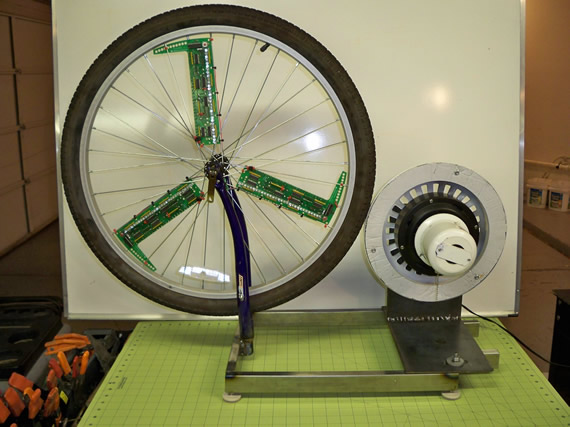
READ —>:
I’m not going to give construction details because it requires a welder, chop saw and plasma torch which most hobbies don’t own. But if you do then you will most likely gleam enough from the photos. In general the lower tube frame is 22 x 13 inches. All the metal is from leftover scraps from older projects so it’s kind of a patchwork quilt design.

The ceiling fan’s center motor hub, black part, was not large enough to spin the tire fast enough to produce a persistence of vision image in the spokes. So I had to bolt one-half of the fan’s white cowling enclosure to the motor hub which effectively increased the diameter of the motor and greatly increased the rotation speed of the tire. 
Unfortunately this cowling acted like a speaker amplifying the road noise of the tread on tin. To reduce this I used a cut-off wheel to grind off some of the cowling as you can see in the below photo.
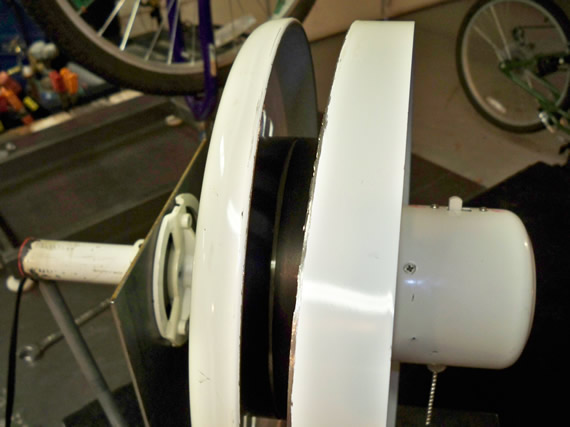

This helped but to further reduce the noise I cutout a circle of high density foam and bolted it inside the cowling. This worked great reducing the road noise to just a low hum. If one were to use this for a display device I would use a tire with little or no tread and it should then be whisper quiet.



If used as a display device the motor would get a bit hot so I reengineered the vent holes in the cowling by bending them out and backwards by ~35 degrees. This effectively created fan blades and drives air over the motor keeping it cool for continues use.
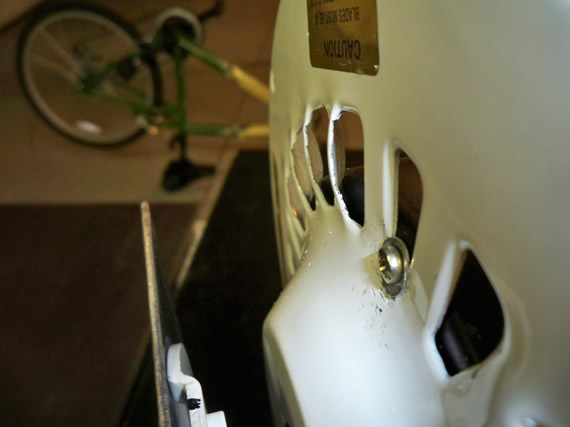
Below is the mounting bracket for the fan motor using most of the original hardware. The cord is from a discarded floor lamp.

Here are a couple of photos from the left and right ends.


Here you can see I torched out slide notches so the motor mounting can be adjusted forward, backward and a little left and right for different size tires. 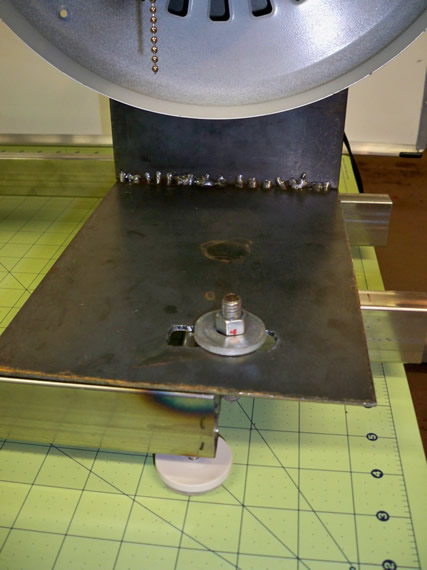
The SpokePOV boards trigger their timing from a Hall Effect sensor on one of the three boards. As this sensor passes under a magnet it sends a signal to all three SpokePOV boards at once so they can calculate the correct LED flash timing based on the tires rotational speed and can then draw a clear persistence of vision image in the spokes.
Here is a photo of a magnet epoxy to the head of a bolt that is run through the bicycle’s upper front fork. In my testing rig the junked-out front bicycle fork is mounted upside-down so the SpokePOV image will be upside-down when viewed but the image will be right-side-up when the tire is on my bicycle.
